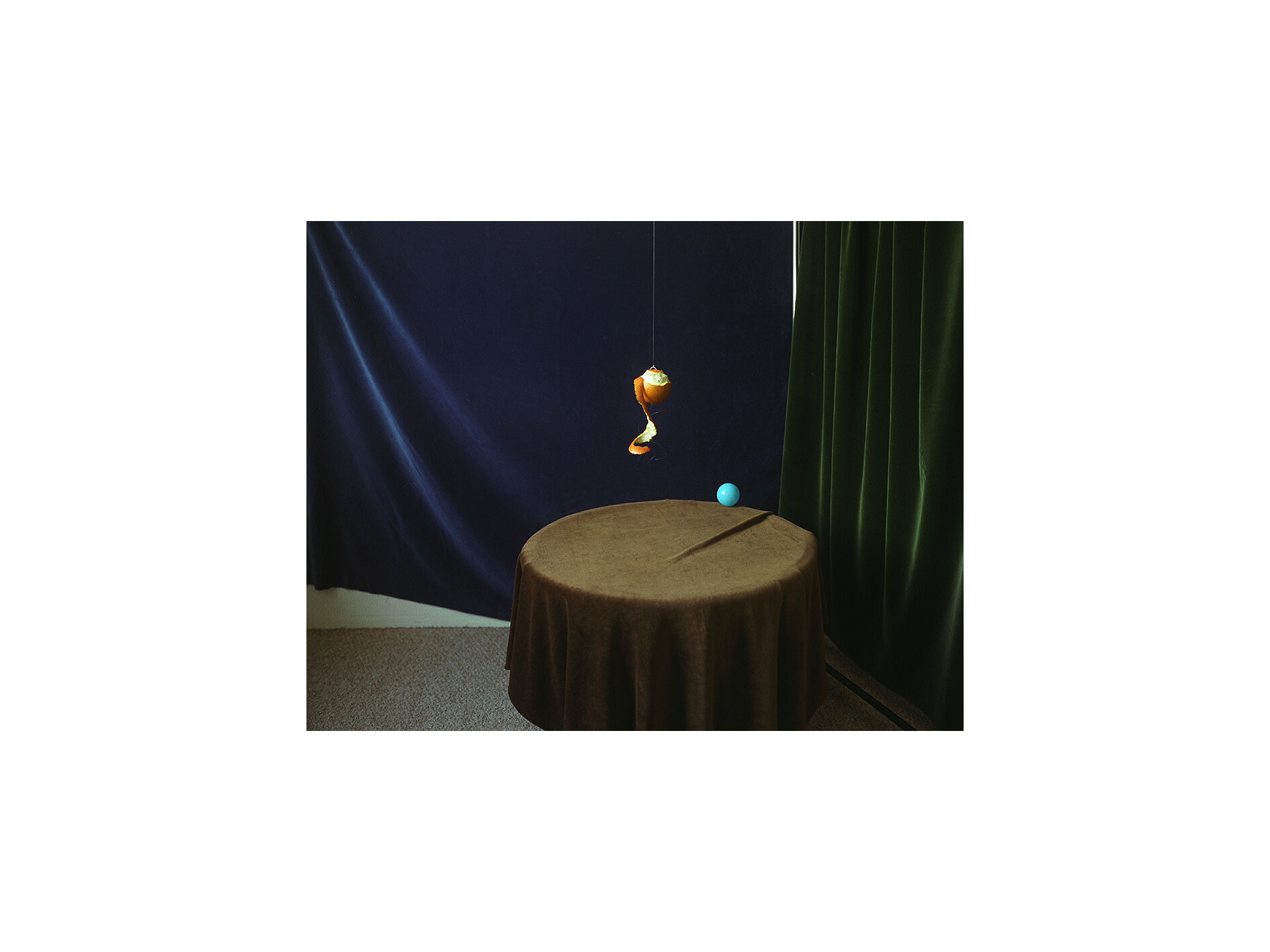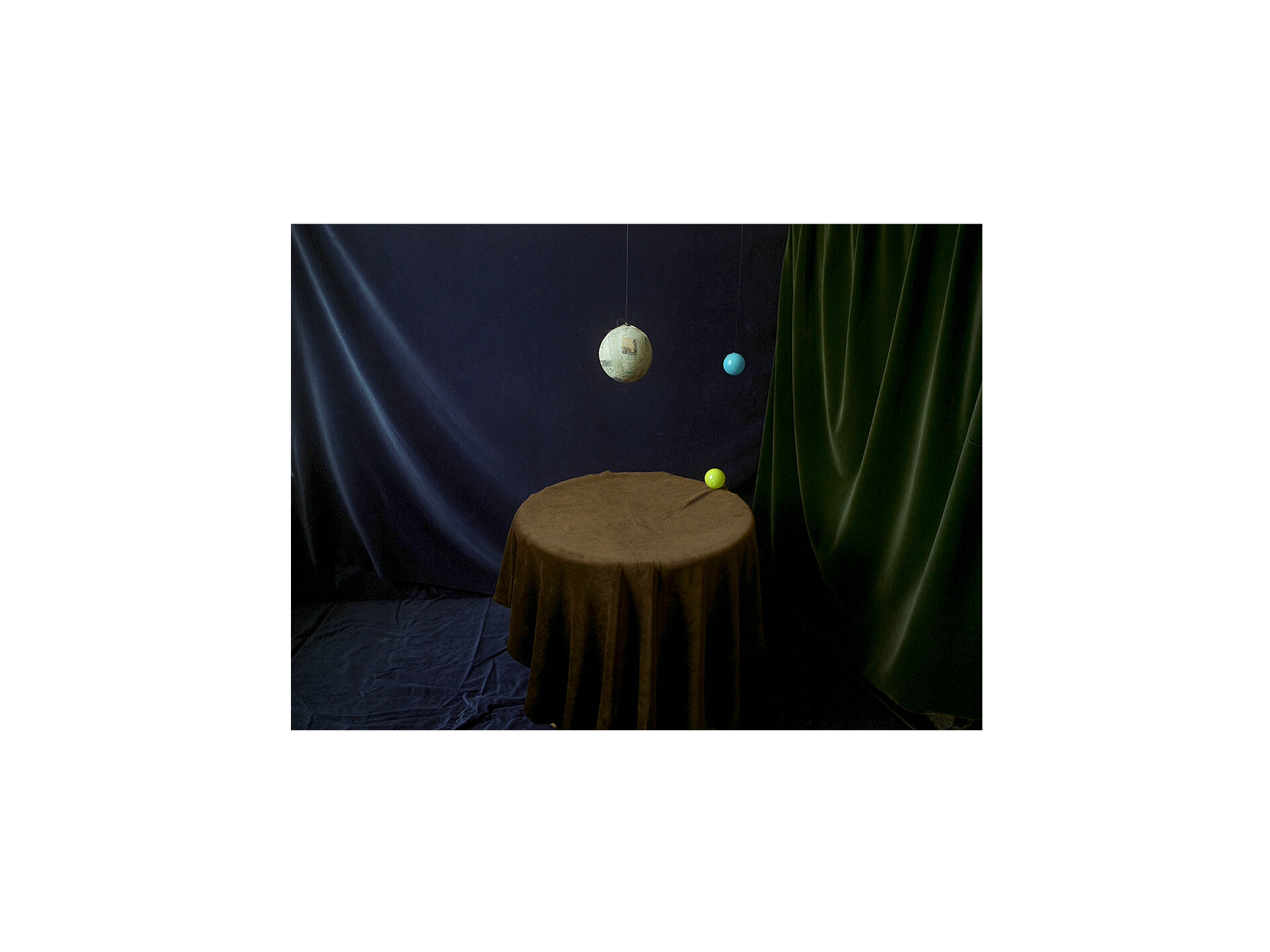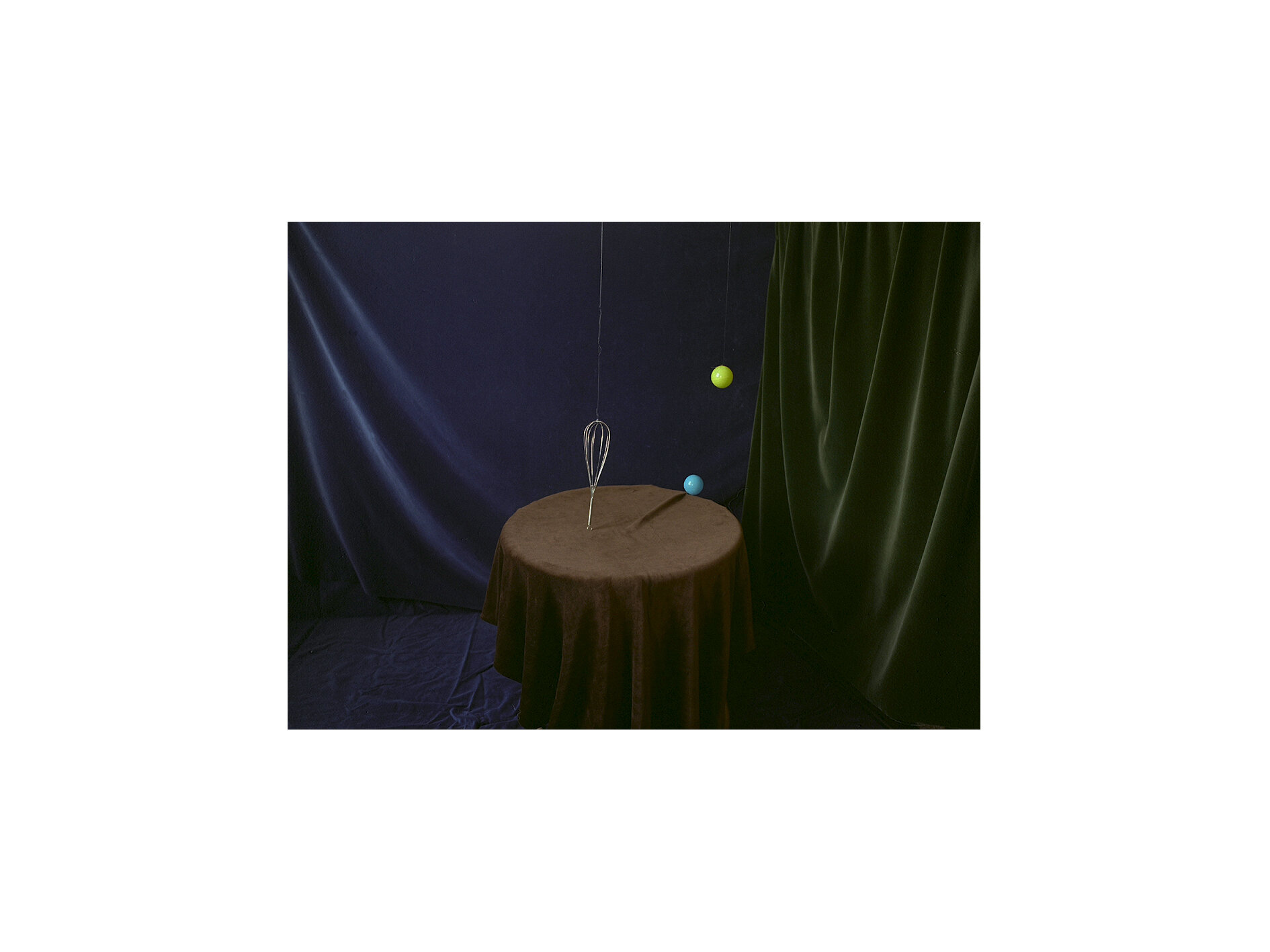











They are everywhere. They are functional, they are decorative, they are discarded, they are lost and mysteriously found. Inanimate objects are said to be as abundant as the estimated 8.7 million species of plants and animals in existence and scientists say that that their weight now exceeds that of living things. Yet our possession of them is transient. We organise and arrange our lives as best we can around their ever-shifting narratives as they move through space and time, each ownership and different usage bringing new meaning, emotional fingerprints accumulating over time. Yet despite our persistent attempts to make the inanimate animate, to imbue them with meaning and reliability, they seem to possess an inwardness that we can never fully grasp, the possibility of an existence independent of human awareness and intent.
Still life is one of the rare types of image-making where the human form is deliberately avoided. Whereas many other genres contribute to the building and affirmation of human visual identity and the human experience as the primary focus of depiction, still life moves away from this, its authors eluding the centrality of human experience, negating an anthropocentrism prevalent in many Western religions and philosophies. Not only is human presence avoided, but also its potential to create narrative interest. In still life,
the notion of the event is no longer present - the subject and its possibility of experiences is replaced by the anonymity of the shapes and contours of the object. Rhopography is a form of still life that depicts the trivial, an attention turned towards the eventless, a staging of the overlooked. Artists like Juan Sánchez Cotán in 16th century Spain and Caravaggio in 17th century Italy both worked with this form of still life, reversing the scale of what the human gaze considered as unique and of pictural value, by producing a sublimated form of the mundane. Cotan’s interest lay in the disregarded larder, its contents taking centre stage. Placed on anonymous looking surfaces and against dark backdrops which separated them from the kitchen table and the human shape, they became tactile-less, alienated from the idea of consumption and purpose, and elevated to a sort of hyperreality. Objects and consumables were equally sublimated in the work of Caravaggio. Placed against obscured, shadowless backgrounds, the familiar depth of field of the three-dimensional space was removed, much like in close-up photography where all planes of a scene seem to meld, directing the viewer’s gaze to the focal point in the picture, in this case the object. The frame and formal composition played a crucial part in creating a space where all sense of narrative and temporal structure was lost to spatial closure. This resulted in an aesthetic spectacle, rejecting the relatable, domestic setting in favour of the theatrical stage, where objects became uniquely destined for the gaze. Although still recognisable in form but alienated from their usual context, the objects suggest an otherness, echoing Freud’s uncanny, the possibility of existing within another reality which is estranged from the everyday as we expect to perceive it.
Various schools of thought have advocated for the object’s right to exist independently from human consciousness. Object Orientated Ontology, a field of thought developed by philosopher Graham Harman, believes in a world that exists independently and externally from human awareness, rejecting the idea that things are only real from the viewpoint of human perception. It believes that all things are objects, and that all objects are equal, from the speck of sand to the satellite constellation, via the small plastic keys under my fingers tips that press down on a contact layer and emit signals to the object I know as a computer. Objects are considered as self-subsisting and autonomous, with a hidden existence that is independent and entirely inaccessible to human understanding. In ‘Man and his Symbols’, the last work undertaken by Carl Jung before he died in 1961, he explains that at the very heart of their being, objects will always remain a mystery to us, as we are unable to ‘know the ultimate nature of matter itself’.
And yet we continue to place a lot within the objects that we surround ourselves with - we charge them emotionally and build a dependence on them which is not reciprocated. This transferring of life, treating inanimate objects as though they were living beings, is almost second nature to us, deeply ingrained within our everyday. Why is it that we kick, throw, or scream at objects when they stop working? Do we expect them to respond, feel physical pain, experience remorse, or be mistreated into submission? The dependence that we have on them is to a point that some seem to act as extensions of our bodies, prosthetics limbs that aide our evolutionary shortcomings. For example, umbrellas, extensions of the arm, protect our outer layers against bad weather where our ancestors were once covered in fur. Glasses act as satellites for our eyes when our own organs start to fail us. And yet, as vital as these objects may be to us, they are often lost and found by others, seeming to operate a system of migration which allows them to constantly shift between spaces, carrying out a hidden agenda which is incomprehensible to human understanding.
The mistrust we have towards objects and their concealed narrative is an age-old concept. Throughout past centuries, all sorts of theories and literature have been written about the perversity of the inanimate, with objects being accused of seeking revenge and turning against their owners. Jung also referred to the unease and anger that we feel towards them and their tendency to behave badly. Yet he warned against cursing them, believing the more you addressed them in terms that are appropriate to life, the more you would instil life into them, almost like a form of animism. Seemingly humorous theories such as Resistentialism describe the spiteful nature of objects, who would be capable of showing a high degree of malice towards humans in their daily interactions, positing the idea that a war is being fought between humans and the inanimate on a daily basis. This secret life and conspiring of objects against humans would be part of a higher order, a general perversity of the universe. It’s easy to understand why, when faced with constant occurrences such as socks that go missing from drawers, house keys that evaporate, glasses that place themselves just under where you sit, it may be easier to approach the tenuous relationship between humans and objects with humour.
And yet this distrust of objects doesn’t only originate from their apparent uncanniness. Much of the suspicion we bear towards them seems to come from our handling of them throughout history. Prior to the industrial revolution, production of goods ran mainly on a supply and demand basis. Many agrarian societies operated through yearly seasonal cycles of indulgence and rationing that ensured that the supply of consumables was evenly spread throughout the year. The welfare of society was dependent on its ability to submit to a generalised and strict morality of consumption and abstinence which focused on communal rather than on individual wealth. However, by the 1700s, with the industrial revolution well on its way in many European countries, a shift began to operate in the production of goods, with many countries starting to run on a system of overproduction which we know only too well today. An increase in wealth was brought about by a significant growth in labour force (which in turn lead to an increase in food production via the agricultural revolution), the creation of trade routes and the exploitation of natural resources in colonial empires. These industrialising societies had to find an outlet for the increase in prosperity – one outlet was the pursuit of pleasure, which was deemed as economically profitable for industrialised society at large. This, for example, could be seen in the creation of luxuriant architecture– boulevards, expansive and ornate spaces dedicated to commerce and entertainment. New paths and patterns of expenditure were being created – instruments of affluence dedicated to developing a taste for consumption. With the creation of an aesthetic-led culture, the barriers between necessity and luxury were being dissolved making it difficult to distinguish between both. Models of behaviour were also created as another way for managing this newly found over-abundance of goods, notably within the domestic space. In the Victorian home for example, objects were crammed into every room – spaces were devised and divided to create as much space as possible for the display of worldly goods. Walls were adorned with elaborate patterns, complex frames and casings were created for their display - a motionless and crowded performance of objects within the domestic space, a horror vacui, where overproduction was absorbed into the home or maybe it was the home that was absorbed within this overproduction. The home became a microcosm, representative of a shift in value systems within society, where an increase in available goods fed an aspiration for ownership and cultural capital. As said by John Berger in his 1970 essay ‘Past seen from a possible future’, ‘a man is what he possesses’.
It is within this context of overabundance, that an ambiguity in attitudes towards the notion of abundance surfaced. By the seventeenth century the Netherlands had become one of the wealthiest nations in the Western world. However, possessing few cultural traditions they lacked the necessary outlets (for example a reigning monarchy) for the absorption of wealth and so the domestic space also became one of the major outlets for the tide of mounting capital. Homes were filled with an array of opulent goods, larders exploding with imported foods, rooms filled with decorative objects and walls and floors adorned with expensive materials. Yet there was an ambiguity felt towards this influx in wealth. Up until this point, the country’s agricultural industry had not been sufficiently developed to ensure yearly surplus, and so had always operated through seasonal cycles of abundance and shortage. Abstinence was woven into the fabric of society and had a created a strong moralistic approach and suspicion towards wealth. Dutch still lives illustrated the anxious dialogue between the newly affluent society and its moral attitude towards material possessions. Vanitas paintings were deliberately built on this paradox. While depicting a profusion of worldly goods they also carried a strong moral message, warning of the transience of life and earthly pleasures - a troubled dance between virtue and abstention, wealth and vice. The dishevelled banquet tables of painter William Claesz showed objects and food debris abandoned in mid-consumption: adorned silverware dug into half-eaten pies, goblets overturned onto once neatly folded velvet tablecloths, plates of abandoned food balancing precariously over table edges - the chaotic dialogue between objects and consumables of an overrun household in danger of losing its moral grip. And yet the message behind the still life of the table went beyond the abandoned consumables and the voracious grip of hands and mouths. It also spoke of the nature of imported foods and precious objects, calling out to the influences of oceanic trade routes and capital investment. The abundance and illogical collection of objects on display, such as in Willem Kalf’s painting where metalware is strewn across a table and chair, creates a rupture between the object and the familiarity of the home. The absurdity of the layout makes the objects unrelatable to human usage and their utilisation within the domestic space – speaking more of boundless amassing of capital and distant trade routes, than of their bond with the human body which now appears ruptured. Their continuous and unnecessary accumulation, like a performance which is out of control, shows objects that seem to have dispensed with human attention. In an era of growing materialism, these paintings issued a warning: ensnared by senseless, mass-production, humans faced moral corruption, with objects threatening to engulf their very being. But the paradox is even furthered when considering the framed still life as an object, and one which would have been purchasable at a high price. Nonetheless, what is strongly felt in these paintings is the notion of disembodiment that can result from accumulating possessions.
Nowadays, moral questioning of past centuries has given way to modern consumerist societies that run on infinite cycles of creation and waste. In a more contemporary questioning, in ‘The Consumer Society’ (1970) Jean Baudrillard described humans as idle spectators whose pulse is rhythmed by the incessant production of goods on a conveyor belt. But the singular object has now given way to a network of objects that will ensure their proliferation: The need to purchase the next model, the gadgets that works better as a set, the vases that look best displayed as a collection, the disposable computer that no longer conforms to the latest software update and so on. The kitchen, the bathroom, the bedroom, the walls, and inner functioning of the home all intwined within this cycle of commodities whose in-built redundancy will ensure the perpetuation of their endless creation. This cold, mechanistic view is very far from Gaston Bachelard’s description of the home in ’Poetics of Space’(1958). Both books are written just ten years apart, but they present wildly differing views on the domestic space and the objects that fill it. For Bachelard the home is a ‘psychic space’, its corner, crevices and walls providing a much-needed shelter for the imagination, a place where one can dream, and its objects the ‘member[s] of the human household’. If we give them friendship, as he advises, objects have a conciliatory effect, contributing to our emotional wellbeing - far from Baudrillard’s consumerist entrapment. They contribute to the domesticity of the safe and happy household, each performing their own function, providing markers, points of reference through which we navigate the corners, walls, shadows, and crevices of our household. And yet for both, the home and its content reflect the individual’s macrocosm, extensions of the self.
But what happens (to the self??) when the objects seem to be off kilter or out of control, as suggested in some of the 17th century still life paintings? What happens when they no longer perform as we expect them to, when their shapes and contours no longer respond to maintaining the orderly aspect of the home? What happens during the dead of the night, when in our sleep we relinquish the spaces of our home to objects that fill it? The idea of things being removed, of no longer being in the place where we expect them to be plays a big part in the fiction of H.P. Lovecraft. Here, like a sudden flip in reality as we usually understand it, the ordinary becomes weird and the expected gives way to the unexpected – the ‘outside can make an irruption, through time and space, into an objectively familiar locale’. For Bachelard, this idea of an exterior force entering the home, ‘the universe comes to inhabit his house’ opens the possibility for day much needed day dreaming, but for Lovecraft this is a source of deep unease within the home. Things are not always as they seem. The friendly, familiar, and order-bringing objects of Bachelard’s home have also been the cause of deep mistrust over the centuries, for we suspect that they may have motivations that are different to our own. Could it be that we have become too dependent on their roles within our lives, and here lies the cause for our concern? Baudrillard warned that the age of consumerism marked a fundamental mutation in the ecology of mankind – a new era where we live by object’s incessant succession, an age of consumerism in which the object has become the new cult, where our biggest dreams become tangible and labelled with a price tag. We have created objects that define us and provide us with a set of rules to live by - a form of new religion. Could this be our need to feel a sense of belonging, with objects acting as constellations, reference points within a boundless and seemingly senseless universe? We may suspect that they never asked for as much. There is therefore much to lose when these objects start to misbehave, when we get the strange impression that they may be operating on planes that defy our understanding. Nowadays, our relentless supply of objects is still dependent on appropriation of resources and labour, however the echoing of distant trade routes and exotic produce of past centuries, has given way to a constant drone of mass global manufacturing, exploitative supply chains and ecological breakdown. Have we been foolish to believe that these objects lived by our rules? We, as outdated machines, still live by the cycles of nature, whereas objects, modern fauna and flora of our own creation, follow an altogether different set of laws - that of the economy, of value exchange and stock market fluctuations. They are the dominant specie, and they may not have our best interest at heart.